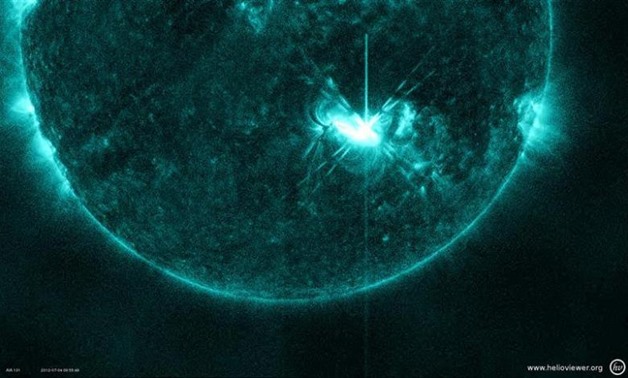
This image, captured by the Solar Dynamics Observatory, shows the M5.3 class solar flare that peaked on July 4, 2012, at 5:55 AM EDT, released July 5, 2012 – REUTERS/NASA/SDO/AIA/Helioviewer/Handout
CAIRO – 20 December 2017: This year has been a fruitful one in terms of groundbreaking discoveries and developments made in various scientific fields. Genetics, physics, space travel and many other fields have enjoyed breakthrough developments that will push the human race forward. Here are a few of the best scientific breakthroughs this year:
Einstein’s general theory of relativity is proven by gravitational waves
 Outer space – CC/Pixabay
Outer space – CC/Pixabay
The theory of relativity, space and time suggests that the dimensions relate to each other, there is space-time and objects in the universe warp space-time and they create gravitational waves in the process. Until this year, this had been an unproven theory. However, recent technological advancements have allowed astrophysicists to measure gravitational waves created by massive objects, such as black holes and neutron stars. In September gravitational waves were detected by three different scientific observatories, allowing scientists to pinpoint their source. More importantly, their detection proves the theory of relativity.
An artificial womb has been developed
Scientists have managed to develop and create an artificial womb to keep premature lambs alive and able to develop normally outside their mother. This could be a huge breakthrough in the treatment and care of prematurely born human babies. The baby lambs managed to live four weeks inside the artificial wombs, which resemble sealed plastic bags filled with manmade amniotic fluid.
NASA scientists discover seven planets with the potential to sustain lifeNASA scientists have discovered seven planets, approximately the size of the Earth, in the constellation of Aquarius surrounding a star, TRAPPIST-1, in the solar system. The solar system is 40 light years away from earth, making it close enough for further study. The planets are in what’s known as a “Goldilocks Zone” – an area that is not too far from the star and not too close. Scientists hope that within the next decade, we will have discovered if there is life on these planets.
Secret chamber found in the Great Pyramid of Giza
 The Pyramids – CC/Bruno Girin
The Pyramids – CC/Bruno Girin
Archeologists have found a 100 foot long cavern in the Great Pyramid of Giza using imaging techniques that utilize high speed particles. This technique is a technological innovation. The particles are made when cosmic rays from other high-energy objects reach Earth and interact with air molecules. Scientists used these rays to penetrate the rocks of the pyramid and discover the void. They are almost 100 percent certain that the space exists but are not sure of its use.
US scientists successfully edited the DNA of a human embryo for the first time
 DNA Strands – CC/Pixabay
DNA Strands – CC/Pixabay
This year was the first time U.S. scientists successfully edit the DNA of a human embryo. This was done successfully by Chinese scientists a few years ago. The U.S. scientists used a powerful tool called CRISPR to do the editing. They corrected a genetic mutation in the embryo that causes a heart condition called hypertrophic cardiomyopathy, proving that scientists can edit an embryo for a specific set of genes. However, this procedure is extremely controversial; thus, for the time being, it will only be used to eliminate serious diseases, because of the ethical implications.
SpaceX has successfully created a recyclable rocket booster
This year SpaceX managed to successfully design and implement a rocket booster that could be reused and would not crash after use. The booster is generally the most expensive part of a rocket, so this development could greatly cut costs by increasing the use of boosters, which previously could only be used once. The booster saves SpaceX up to 18 million dollars per launch. In the past year SpaceX has landed over 20 boosters.




Comments
Leave a Comment